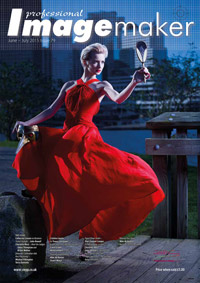articles/Paper/paper-spectrum-page6
The Great Paper Chase - Paper Spectrum Pinnacle Paper Range - part 6 of 1 2 3 4 5 6 7 8 9 10 11
by Mike McNamee Published 01/06/2015
Pinnacle Matte 230gsm
Premium, smooth matt coated 230gsm photo ink-jet paper. Very white, smooth surface ideal for monochrome and vibrant colours. Popular for presentation, photographic applications and economical fine art prints. This is the weakest-performing paper of the group although it is also the least expensive. It has the smallest gamut volume and the lowest Dmax of the group. It delivered the highest average error of the group also. Despite this it did produce a well-graded print with good crisp detail and the shadow differentiation held up to an unusually low value of 10 RGB points. The blocks of solid tone were very even.
Pinnacle Fibre Matte 300gsm
Modelled on the traditional fibre based material used in conventional photography. Ultra-smooth, bright white matt surface for vibrant colours and deep rich blacks. Superb heavyweight fine art matte paper. This paper is within the weight range required by Fine Art Trade Guild of 250gsm minimum. The retention of detail is slightly poorer than the Matte 230 although the colour audit was superior. The coating was more absorbent and there was a sign of the solid patches of colour starting to become a little speckled.
Pinnacle Premium Silk Baryta 310gsm
Luxurious baryta paper with a slightly warm pure white shade. Silky smooth satin surface of a traditional silver halide photo paper. Perfect for colour images with vibrancy and depth or for traditional black and white images.
The 'silk baryta' papers have consistently delivered spectacular colour audit data and this offering is no exception, delivering near recordbreaking parameters in every department. Once again the skin tone accuracy was at an undetectable level (1.01ΔEoo) and the overall error was 1.58ΔEoo across all patches. The gamut volume was over the 1 million mark and the HiGAM accuracy was high at 1.8ΔEoo. The media has a moderate Fluorescence of 3.2. For the monochrome specialist the metamerism is low at 1.43 and the grey ramp was accurate with near neutral patches all down the scale; if you need to make monochromes with a full colour profile (say because you have put a residual coloured item in your image a la Shindler's List) then it performs equally as well as using the ABW. Bear in mind though that there is evidence to support the ABW workflow, producing better fade statistics. The near neutral base tone delivers a slightly creamy look to the paper, making it ideal for warm-toned monochrome renderings.
Please Note:
There is more than one page for this Article.
You are currently on page 6
- The Great Paper Chase - Paper Spectrum Pinnacle Paper Range page 1
- The Great Paper Chase - Paper Spectrum Pinnacle Paper Range page 2
- The Great Paper Chase - Paper Spectrum Pinnacle Paper Range page 3
- The Great Paper Chase - Paper Spectrum Pinnacle Paper Range page 4
- The Great Paper Chase - Paper Spectrum Pinnacle Paper Range page 5
- The Great Paper Chase - Paper Spectrum Pinnacle Paper Range page 6
- The Great Paper Chase - Paper Spectrum Pinnacle Paper Range page 7
- The Great Paper Chase - Paper Spectrum Pinnacle Paper Range page 8
- The Great Paper Chase - Paper Spectrum Pinnacle Paper Range page 9
- The Great Paper Chase - Paper Spectrum Pinnacle Paper Range page 10
- The Great Paper Chase - Paper Spectrum Pinnacle Paper Range page 11
1st Published 01/06/2015
last update 09/12/2022 14:57:22
More Paper Articles
There are 20 days to get ready for The Society of Photographers Convention and Trade Show at The Novotel London West, Hammersmith ...
which starts on Wednesday 14th January 2026





